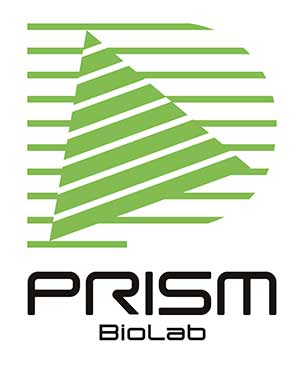Published on: 9月 18, 2024
TIDES (peptides and nucleotides) is seeing the light of the day. TIDES gained an intense attention in drug discovery and the number of the approved TIDES by FDA rose up to nine in 2023.1) The molecular entity covers 16% of the approved drugs and it is expanding the realm over the couple of years.2) Still, small molecules have a coverage of close to 50%, NMW (new molecular entities) is developing an area for drug targeting. However, TIDES, especially peptides, has difficulty in drug development.
Peptides have a century-long history as therapeutics.3),4) Peptide is not the novel chemical class compared to nucleotides.5) But they have a similarity in that their chemical entity exists in nature, and they are composed of limited number of monomers: amino acids for peptides, and adenine, thymine, guanine, cytosine and uracil for nucleotides. TIDES can be easily synthesized by automated process and obtainable from fermentation.
Recent progress in peptide have brought about a paradigm shift in peptide drug discovery and development. AI-based computational design strategies are widely available.6),7) cell-free biosynthesis allows high-throughput sequence of design and screening.8),9) There is still a difficulty from hit to candidate due to the instability, drug delivery and fine-tuning of activity and toxicity, which could become a severe issue of the side effect.10),11)
The FDA-approved TIDES in 2023 are listed below.
| Active Ingredient | Trade Name | Target | Type | Administration |
|---|---|---|---|---|
| Tofersen | Qalsody | SOD1 mRNA | Nucleotide | Intrathecal |
| Avacincaptad pegol | Izervay | C5 complement protein | Nucleotide | Intravitreal |
| Nedosiran | Rivfloza | RISC Nucleotide | Subcutaneous | |
| Eplontersen | Wainua | TTR mRNA | Nucleotide | Subcutaneous |
| Flotufolastat F-18 | Posluma | PSMA (diagnostic agent) | Peptide | Intravenous |
| Trofinetide | Daybue | Inflammatory cytokines | Peptide | Oral |
| Rezafungin | Rezzayo | 1,3-β-D-glucan synthase enzyme | Peptide | Intravenous |
| Motixafortide | Aphexda | CXCR4 | Peptide | Intramuscular |
| Zilucoplan | Zibrysq | C5 protein | Peptide | Subcutaneous |
Among four recently approved peptide drugs, a macrocyclic structure is present except for trofinetide. Trofinetide is a tripeptide (Gly-(α-methyl)Pro-Glu), a methylated mimic of the N-terminal cleavage fragment of human IGF-1 (glypromate). The α-methylation was introduced to increase the half-life and it is used for the treatment of Rett syndrome.12) This TIDE drug is the only orally available, owing to the nature of a simple small peptide.
Rezafungin has a unique cyclic structure that is connected by an aminoacetal with quaternary ammonium salt structure. It is a mimic of anidulafungin, an antifungal lipopeptide, and the antifungal natural product of the same mode of action was approved simulatneously.13)
Motixafortide has a 14-mer cyclic peptide with a disulfide bond. It contains 4 guanidines, 2 ureas, and a primary amine. Zilucoplan possesses unnatural amide cycle at one end and N palmitoyl--L-glutamyl moiety at the other end. It has 4 carboxylic acid side chains and a guanidine.
These molecules were well-designed for the purpose of the disease treatment. But it is obvious that the nature of the peptide as well as the presence of a series of polar residues restricted their administration pathway.
PepMetics® molecules are small molecules with the mimicking nature of a portion of structurally defined peptides. To be honest, we are encouraged by the approval of peptide drugs because our approaches to utilize the characteristics of PepMetics® for drug is verified by these brilliant results.
We are currently focusing on protein-protein interactions (PPIs) for drug discovery and development. However, PepMetics® molecules have a potential to carve out the very necessary structural portion of a peptide.
Biomolecules govern the biological processes. PepMetics® works modulator not only for PPIs but also for enzyme activity and any kind of interaction related to a protein or a peptide. PepMetics® are suitable for circumventing the issue of oral availability because the scaffold does not have a N-H bond. Peptides can be elaborated to become orally available, but our platform of peptidomimetic small molecules could provide you a chance to solve issues on peptide drug development.
1) https://doi.org/10.3390/ph17020243
2) https://doi.org/10.3390/molecules29030585
3) https://pubmed.ncbi.nlm.nih.gov/28720325/
4) https://doi.org/10.3390/antibiotics13030196
5) https://doi.org/10.1016%2Fj.sjbs.2022.103481
6) https://doi.org/10.1002/med.21658
7) https://doi.org/10.3390/ph15030323
8) https://doi.org/10.1038/s41467-023-42434-9
9) https://doi.org/10.1002/anie.202114632
10) https://doi.org/10.1038/s41573-020-00135-8
11) https://doi.org/10.3389/fchem.2014.00062
12) https://doi.org/10.2967/jnumed.120.260091
13) https://www.accessdata.fda.gov/drugsatfda_docs/nda/2006/21948s000_Eraxis_Approv.pdf

